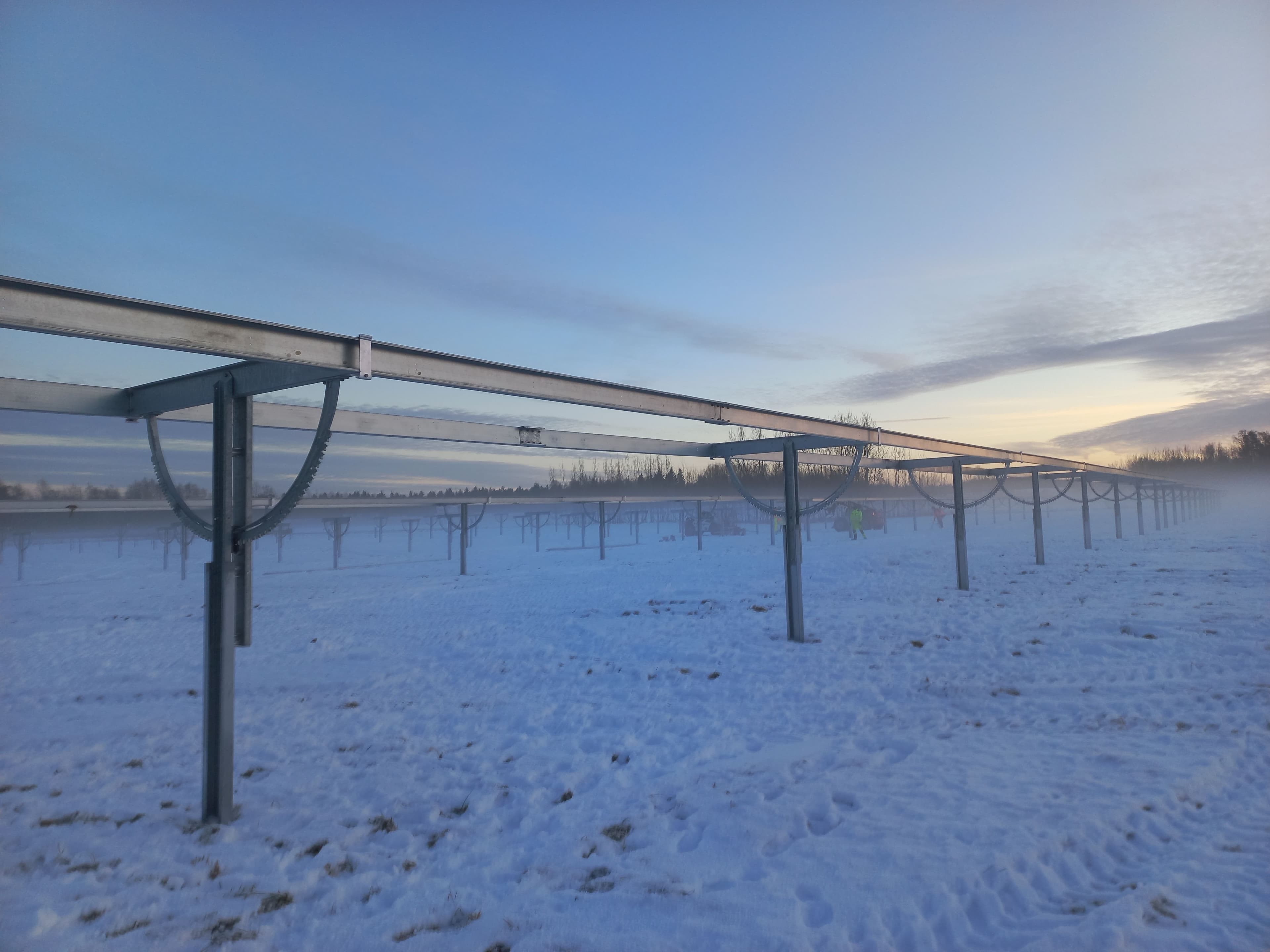We consulted our site managers, experienced in Scandinavian projects, for insights on working in these natural conditions.

Frost and wind
Snow and frost greatly impact our work, with northern temperatures ranging from +5 to -20°C. Construction sites face higher risks of injury, accidents, frostbite, or colds due to the ice and cold. Acclimatization and specific work equipment, such as headlamps, heel traction aids, and gloves, are essential.
Strong winds in northern climates also pose challenges, and we have to take extra care when distributing materials and placing solar modules, especially when installing rooftop solar power plants.
Surprisingly, winter weather can also be a small advantage, as frozen ground is hard enough for material and equipment handling, while in higher temperatures there can be a problem with logistics due to muddy terrain.




